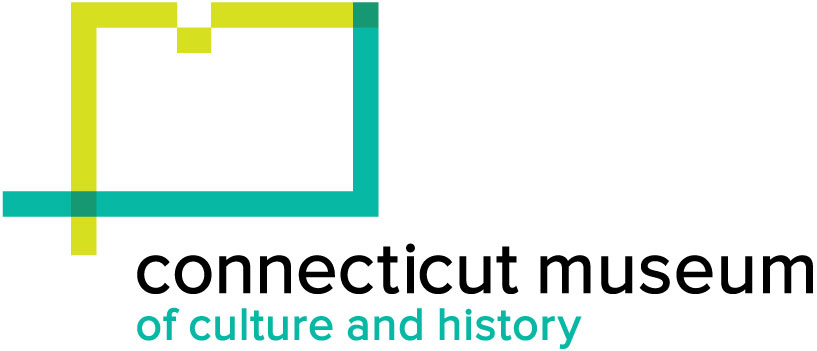Interview with Barbara Solomon
IntervieweeInterview with
Barbara Solomon
InterviewerInterviewed by
Silas Segar
Date18 February 2025
Mediumborn digital audio file
DimensionsDuration: 51 Minutes, 32 Seconds
ClassificationsInformation Artifacts
Credit LineCommunity History Project Collection
Description(a) Audio file of interview with Barbara Solomon. She was interviewed by Silas Segar on 18 February 2025 in West Hartford, Connecticut. (b) Photograph of Barbara Solomon taken at her interview. (c) Photograph of Barbara Solomon taken at her interview. (d) Photograph of "Time, Space and Energy" artwork by Barbara Solomon taken at her interview.
Barbara Solomon was interviewed as part of the Connecticut Museum of Culture and History's Community History Project discussing moments of change in her life.
Barbara is a person that is not fond of change, but also acknowledges change in all its forms, big and small. She has always been an artist, training under various artists throughout her life. Originally she studied Fine Arts, getting an MFA in Painting and Sculpture to follow in the footsteps of her high school art teacher. Though many of the painters she studied under have since passed away, she still has their artwork and has shared it with her family.
Barbara's decision to switch from painting to printmaking was a simple one; it was because “all the people in the printmaking class were having more fun” and that was really all it took. She notes that many of her former students became her friends, emphasizing the sense of community that printmaking provides compared to the more solitary experience of painting or sculpting. Prior to teaching at CT State Manchester, Barbara was a general art teacher at Glastonbury Public Schools, mostly in elementary school for 40 years. Bob Manning, the former director of the art department, hired her to fill in for a previous professor at CT State Manchester and she taught a printmaking class the same day as her interview.
Teaching was not the end of Barbara's learning journey. She continued to take studio lessons, learning new techniques to share with her students. She is willing to accept suggestions from students for improvements to her teaching style. Barbara's most important takeaway from her experiences is connecting with her students and having a community. Working in a community college means having students with a broad age range, all of whom teach and help one another. Due to her long history of teaching, Barbara has created personal connections with the students she previously taught and their younger family members.
Barbara Solomon was interviewed as part of the Connecticut Museum of Culture and History's Community History Project discussing moments of change in her life.
Barbara is a person that is not fond of change, but also acknowledges change in all its forms, big and small. She has always been an artist, training under various artists throughout her life. Originally she studied Fine Arts, getting an MFA in Painting and Sculpture to follow in the footsteps of her high school art teacher. Though many of the painters she studied under have since passed away, she still has their artwork and has shared it with her family.
Barbara's decision to switch from painting to printmaking was a simple one; it was because “all the people in the printmaking class were having more fun” and that was really all it took. She notes that many of her former students became her friends, emphasizing the sense of community that printmaking provides compared to the more solitary experience of painting or sculpting. Prior to teaching at CT State Manchester, Barbara was a general art teacher at Glastonbury Public Schools, mostly in elementary school for 40 years. Bob Manning, the former director of the art department, hired her to fill in for a previous professor at CT State Manchester and she taught a printmaking class the same day as her interview.
Teaching was not the end of Barbara's learning journey. She continued to take studio lessons, learning new techniques to share with her students. She is willing to accept suggestions from students for improvements to her teaching style. Barbara's most important takeaway from her experiences is connecting with her students and having a community. Working in a community college means having students with a broad age range, all of whom teach and help one another. Due to her long history of teaching, Barbara has created personal connections with the students she previously taught and their younger family members.
Object number2024.79.7a-d
NotesSubject Note: The Connecticut Museum of Culture and History’s Community History Project (CHP) is a public-facing initiative, focused on contemporary collecting, gathering items of the recent past as well as from events happening today. This program developed community historians to identify, document, and preserve their experiences as residents of Connecticut, and to share these experiences during a series of community presentations. The project focused on the theme "Redefining Moments of Change." Conneticans share stories of people or events who have changed their lives or how they have sparked change in the lives of others.Cataloging Note: Digitization and access to this collection is supported by a Congressionally Directed grant through the U.S. Department of Education.
Subject Terms
- West Hartford
- Oral history
- Interviews
- Oral narratives
- Teachers
- Teaching
- College teachers
- Professors
- Women
- Women Education
- Artists
- Artists' tools
- Art students
- Art
- Glastonbury (Conn.)
- Manchester Community College (Manchester, Conn.)
- Glastonbury Public Schools (Glastonbury, Conn.)
- Printmaking
- Lithography
- Etching
- Linoleum prints
- Relief prints
- Drypoints
- Provincetown Print
- Education
- White people
- Interviews and Oral Histories
- Born Digital Audio
- Community History Project U.S. Department of Education grant
- Redefining Moments of Change Collection
On View
Not on view18 July 2025
17 July 2025
2022 June 8







